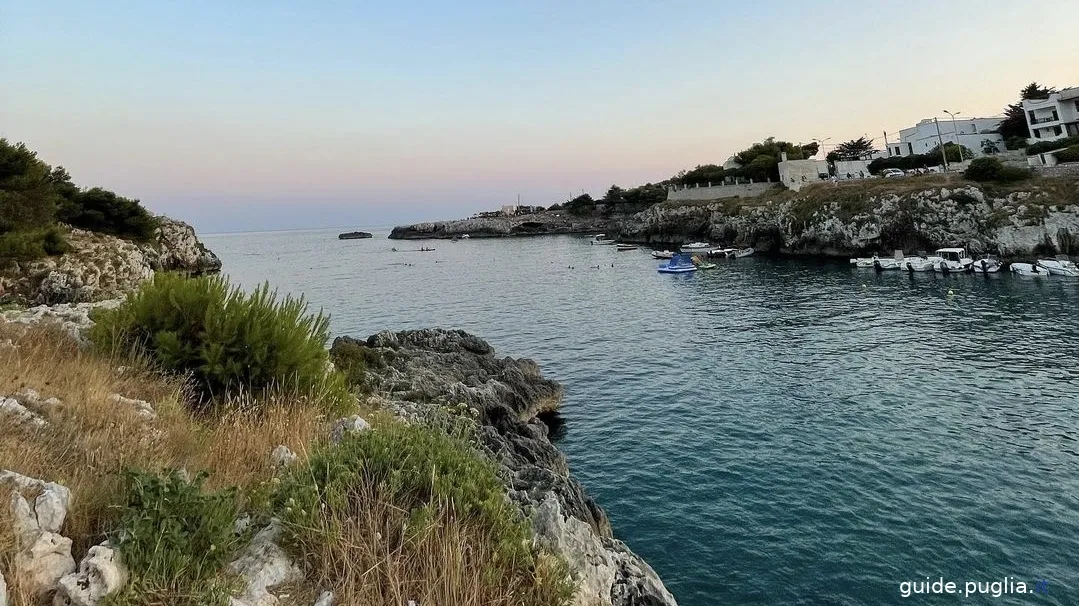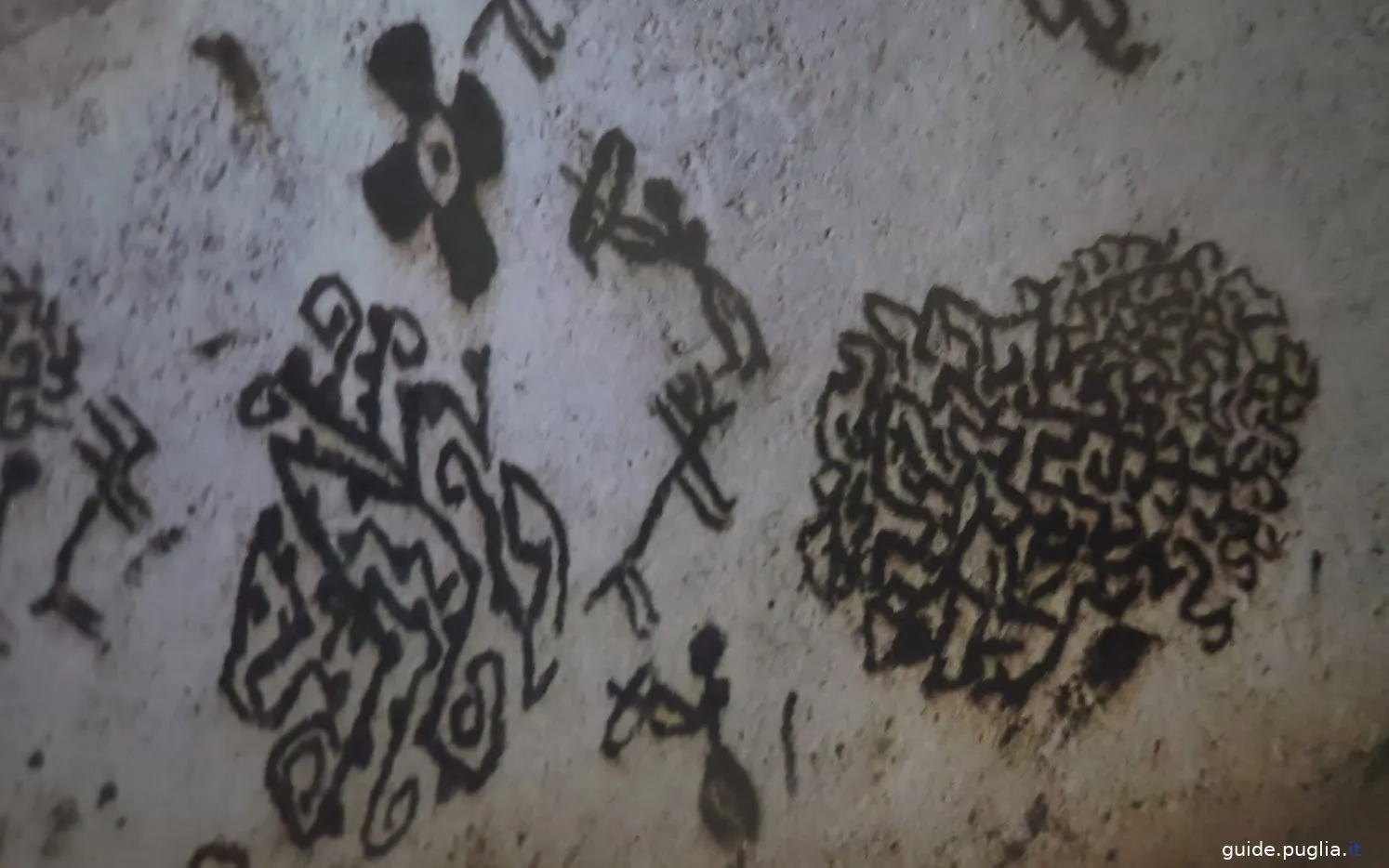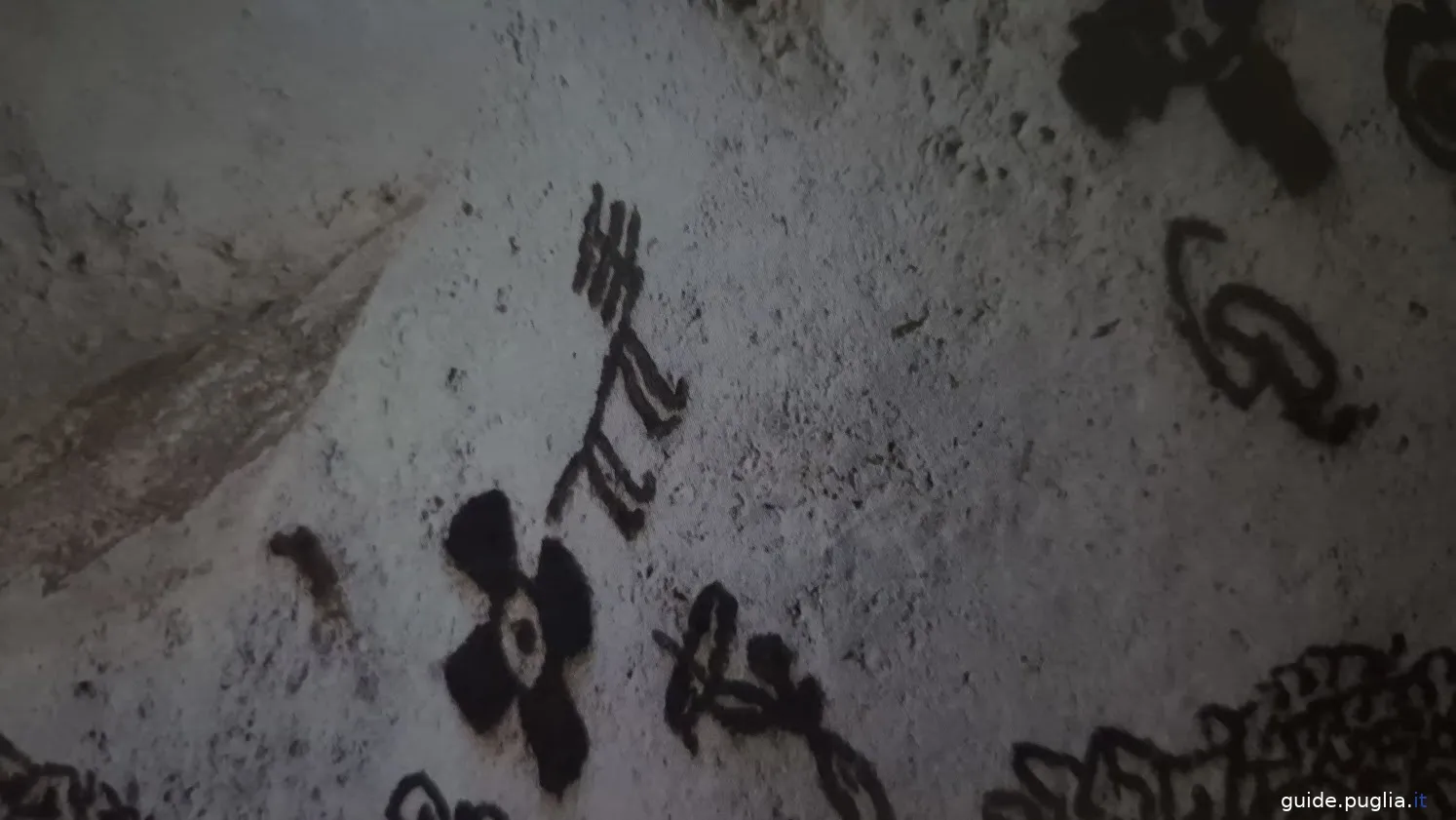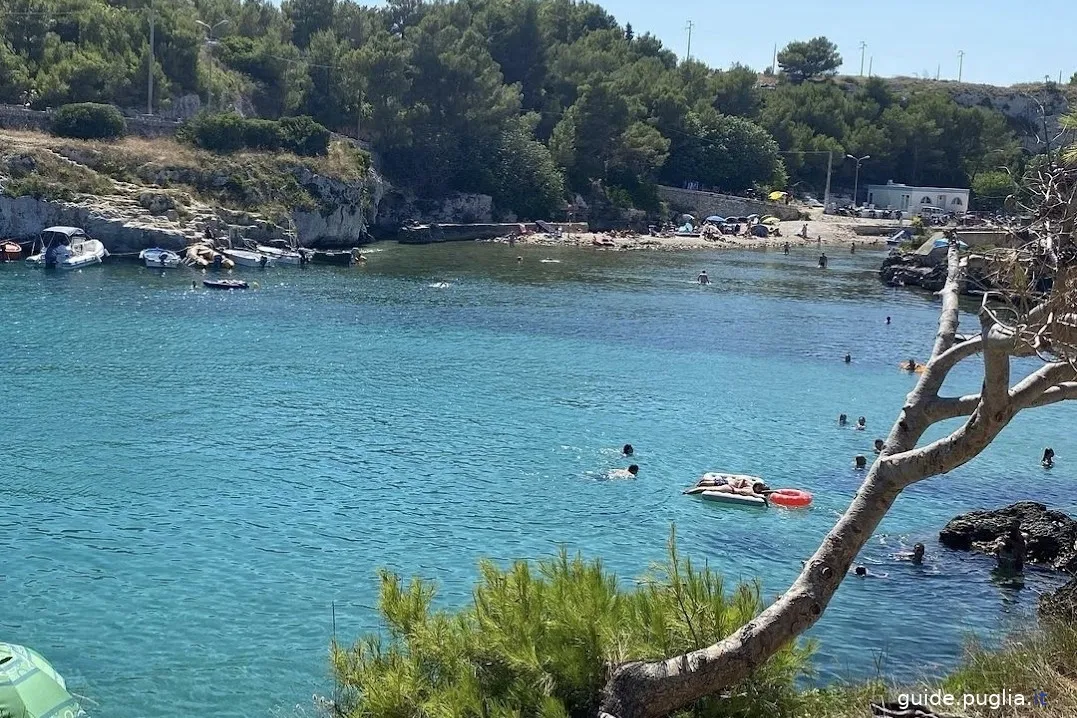Grotta dei Cervi: History and Beauty of the Prehistoric Cave in Salento
Updated at: 25-01-2025
How this content can help you:
- The history and discovery of the Cave of the Deer in Porto Badisco.
- The importance of Neolithic rock paintings and their meanings.
- The religious and cultural significance related to the worship of the Mother Goddess.
- The ways to access the cave and specialized guided tours.
- The alternatives for virtual exploration and museum exhibitions.
- The beauty of the Beach of the Cave of the Deer and how to reach it.

Why is it called the Cave of the Deer?
The Cave of the Deer is named after the numerous depictions of deer that adorn its walls. The deer are portrayed in various poses and hunting scenes, providing a valuable insight into the life and beliefs of the Neolithic populations that inhabited the region.
Grotta dei Cervi in Porto Badisco, in the heart of Salento, is one of the most extraordinary examples of prehistoric art in Europe, a site of invaluable cultural and historical value that fascinates scholars and archaeology enthusiasts from around the world.
Located about 15 kilometers south of Otranto, this cave hides one of the richest collections of Neolithic rock paintings, dating from 6000 to 1000 B.C.
History and Discovery of the Cave
Discovered almost by chance on February 1, 1970, by a group of speleologists from the Gruppo Speleologico Salentino di Maglie, the Grotta dei Cervi owes its name to the numerous depictions of hunting deer that adorn its walls. These paintings, along with human figures, geometric symbols, and scenes of daily life, provide a unique window into the beliefs, activities, and spirituality of the Neolithic communities that once inhabited these lands.
The paintings in the Grotta dei Cervi are known for their extraordinary quality and variety.

Created primarily with red ochre and bat guano, these artworks include images of hunters, domestic and wild animals, as well as magical and abstract symbols that suggest a deep spirituality and a connection with the natural world.
Among the recurring symbols, we find spirals and anthropomorphic figures that might represent deities or ancestral spirits. One interpretation suggests that these paintings could have had a propitiatory or ceremonial function, related to fertility and prosperity.
Religious and Cultural Significance
The Grotta dei Cervi served as a refuge, a place of daily life, and a spiritual and ceremonial center.
Archaeological evidence indicates that the cave may have been used for initiation rituals and ceremonies related to the worship of the Great Mother, a central figure in Neolithic religions symbolizing fertility and rebirth.
This aspect is further emphasized by the presence of "pintadere," terracotta stamps used to decorate the body during rituals.
Accessibility to the Cave
The future of the Grotta dei Cervi requires a delicate balance between the need to preserve this invaluable heritage and the desire to make it accessible for educational and cultural purposes.
The scientific community and local authorities are engaged in finding solutions that will allow future generations to continue learning from and marveling at this extraordinary legacy of the past.

Currently, access to the Grotta dei Cervi is very limited and not open to the general public due to its fragility and the need to protect the precious paintings from moisture and damage that could result from human presence.
Scholars continue to analyze the site using advanced technologies such as high-resolution photography and 3D scanning to document and study the paintings and structures without compromising the integrity of the environment.
Guided Tours and Visits
Access to the Grotta dei Cervi is usually reserved for guided tours organized by specialized entities or local authorities. These tours are designed to protect the site and minimize environmental impact. To visit the cave, it is often necessary to book in advance, and the tours are conducted with small groups to ensure controlled and safe management of the site. During the visits, qualified experts provide detailed information about the prehistoric painters and the history of the cave, ensuring that all conservation regulations are followed.
Additionally, guided tours and educational visits in the surrounding area offer an overview of the cave's history and the Neolithic populations that inhabited it. These tours, organized by local experts and archaeological guides, include in-depth explanations and visits to local museums like the Museo di Maglie, where it is possible to see artifacts related to the cave and the lives of its ancient inhabitants.
Virtual Exploration
For those interested in exploring the Grotta dei Cervi but unable to visit physically, there are virtual exhibitions offering a detailed and interactive reconstruction of the site.
These digital exhibits allow you to navigate through the cave's corridors and closely examine the paintings, providing a valuable resource for education and outreach.
Museums and Exhibitions
To deepen your knowledge of the Grotta dei Cervi, it is recommended to visit the Museo di Maglie, which houses numerous artifacts and illustrations about the cave. This museum offers a detailed view of prehistoric life in the region and the discovery of the cave.
Tour Costs
The costs to participate in these tours vary depending on the organizer and the type of experience offered. Generally, prices can range from 15 to 30 euros per person for guided tours in the vicinity and tours that include museum entries and transportation. It is advisable to book in advance, especially during the high tourist season, to secure a spot.
Beach of the Grotta dei Cervi

The Beach of the Grotta dei Cervi is one of the most charming and lesser-known locations on the Italian Adriatic coast. This beach is famous for its natural beauty and the presence of the Grotta dei Cervi, a subterranean cavity of great archaeological interest.
The beach is framed by cliffs and Mediterranean vegetation, adding a touch of wild and natural beauty to the place. This scenery helps create a tranquil and serene atmosphere, away from the hustle and bustle of more touristy locations.
The beach offers a stunning natural environment, with fine sand and crystal-clear water. The sea here is particularly clear, and there is often good underwater visibility.
Parking
Regarding parking, there are no large parking areas directly adjacent to the beach.
Typically, parking can be found in the surrounding areas or along nearby roads. After parking, you need to walk along a path or staircase to reach the beach, so it is advisable to prepare for a short walk on uneven terrain.
Conclusion
The Grotta dei Cervi is a true archaeological gem of Salento, offering a remarkable view into the life and beliefs of Neolithic populations through its unique rock paintings.
Considered a sort of "Sistine Chapel" of the Neolithic, the cave not only highlights the artistic and spiritual importance of the period but also significantly contributes to the cultural identity of Salento, a region already rich in history, art, and tradition.
Completing the experience, the Beach of the Grotta dei Cervi, with its natural beauty and crystal-clear waters, represents a perfect complement to the archaeological visit. This tranquil and picturesque location offers the opportunity to enjoy the landscape and reflect on the history that this corner of Puglia has to offer.
